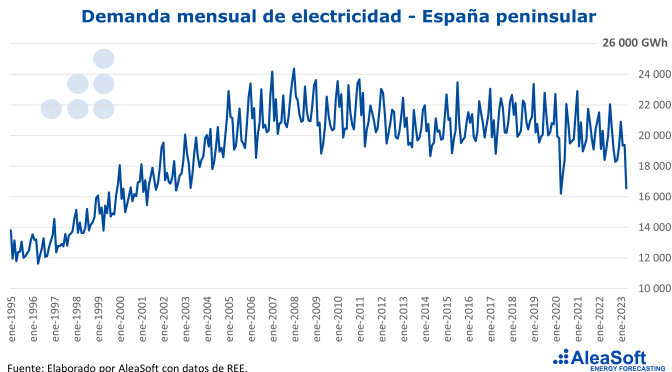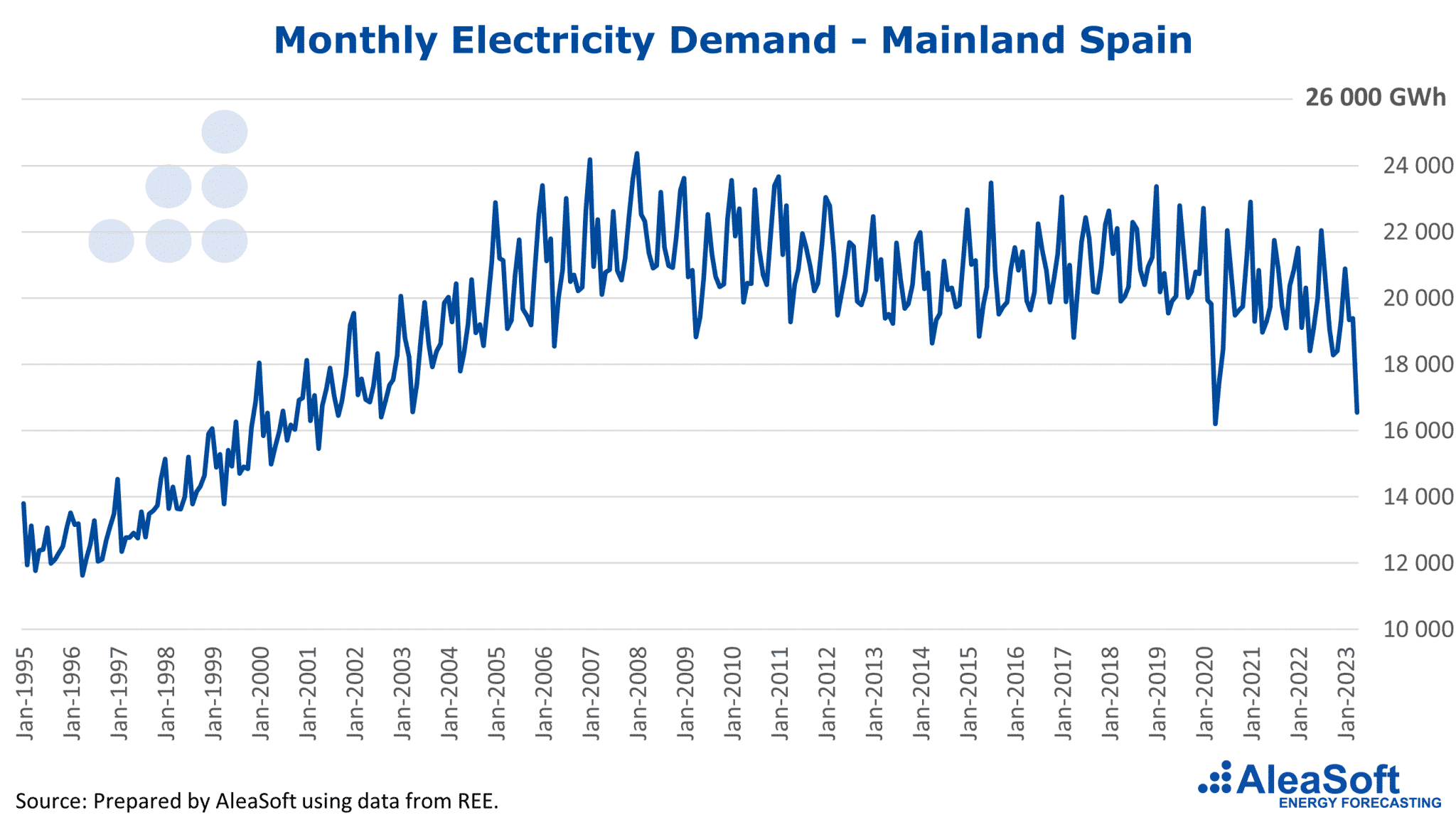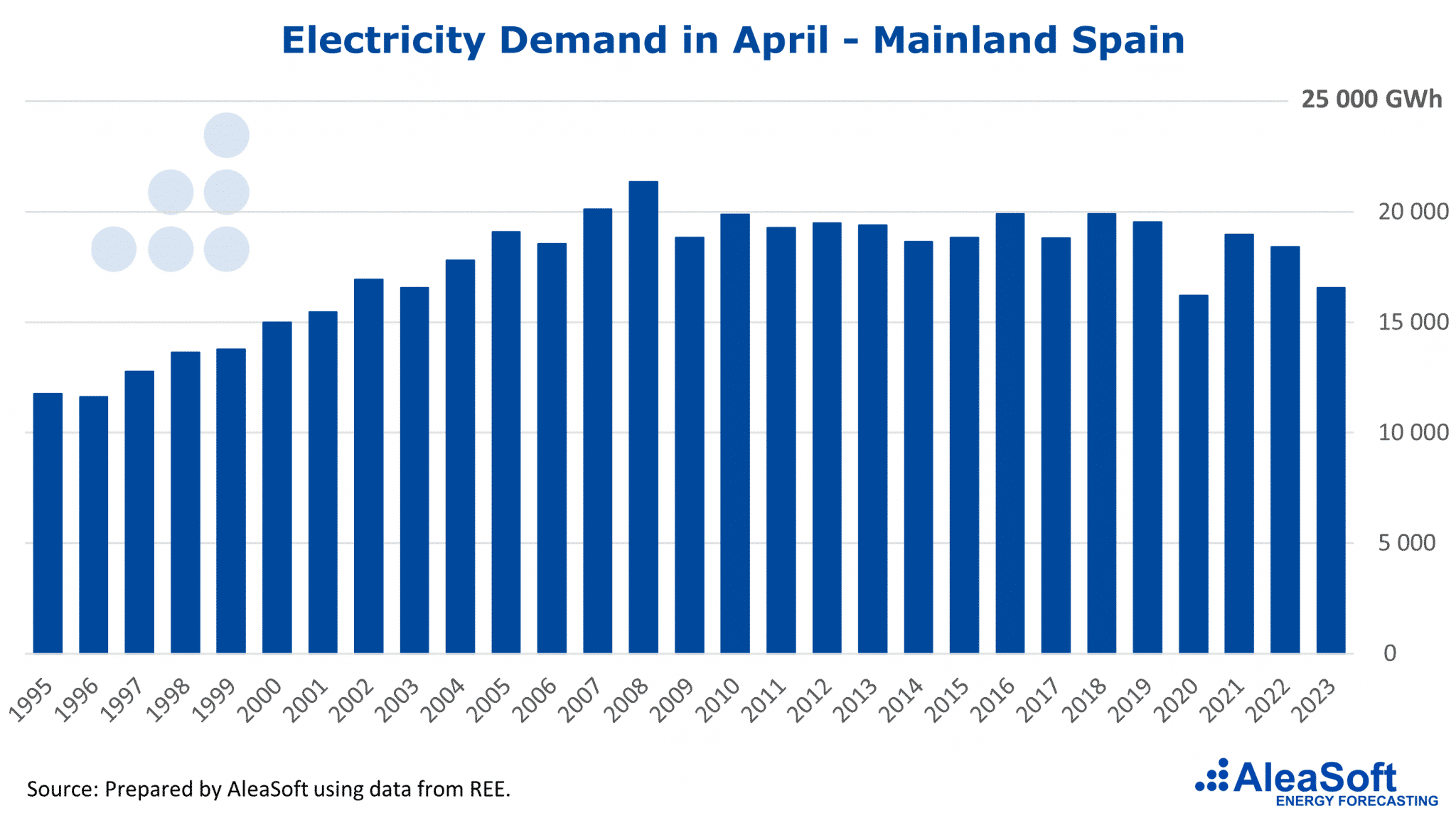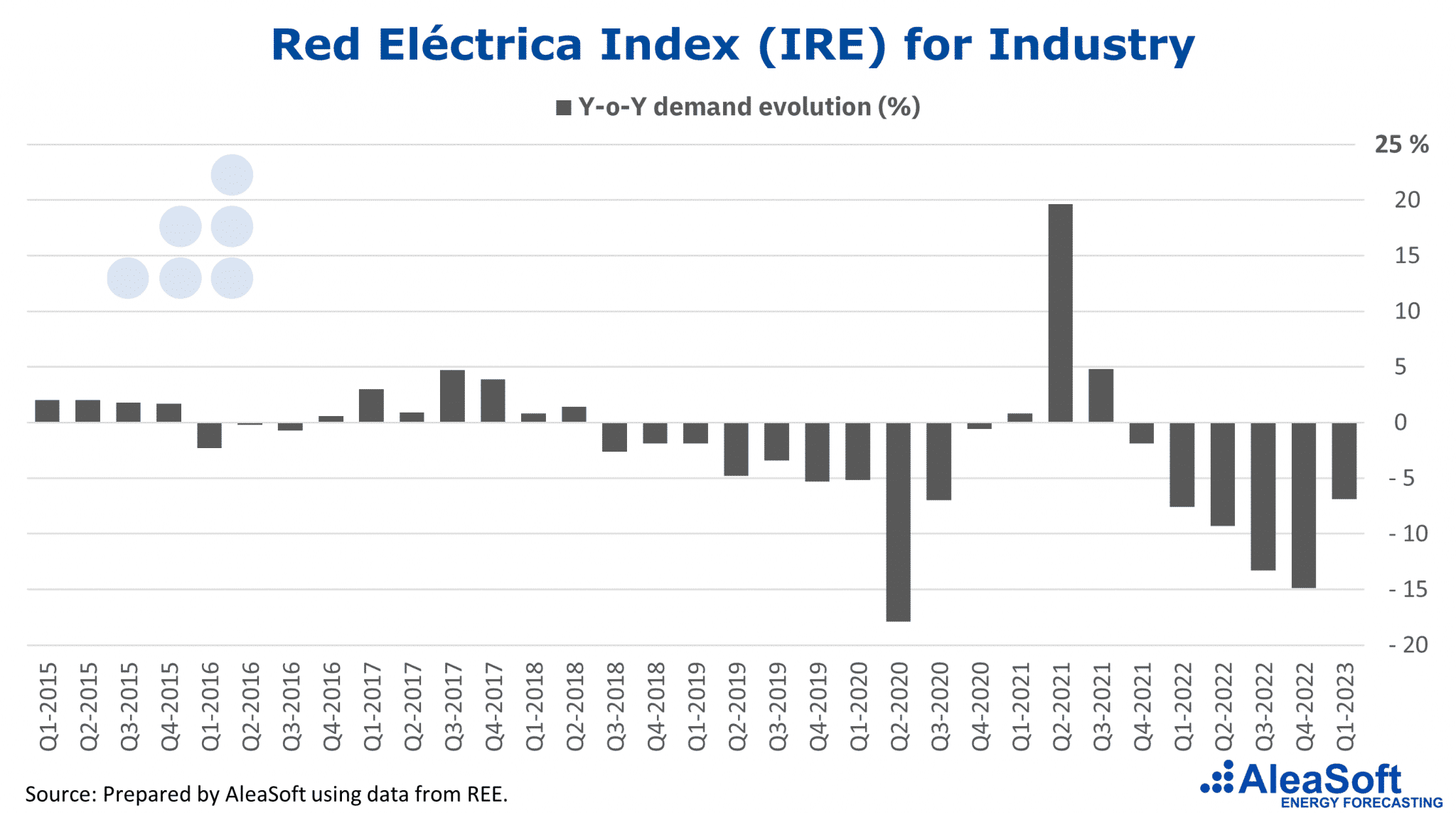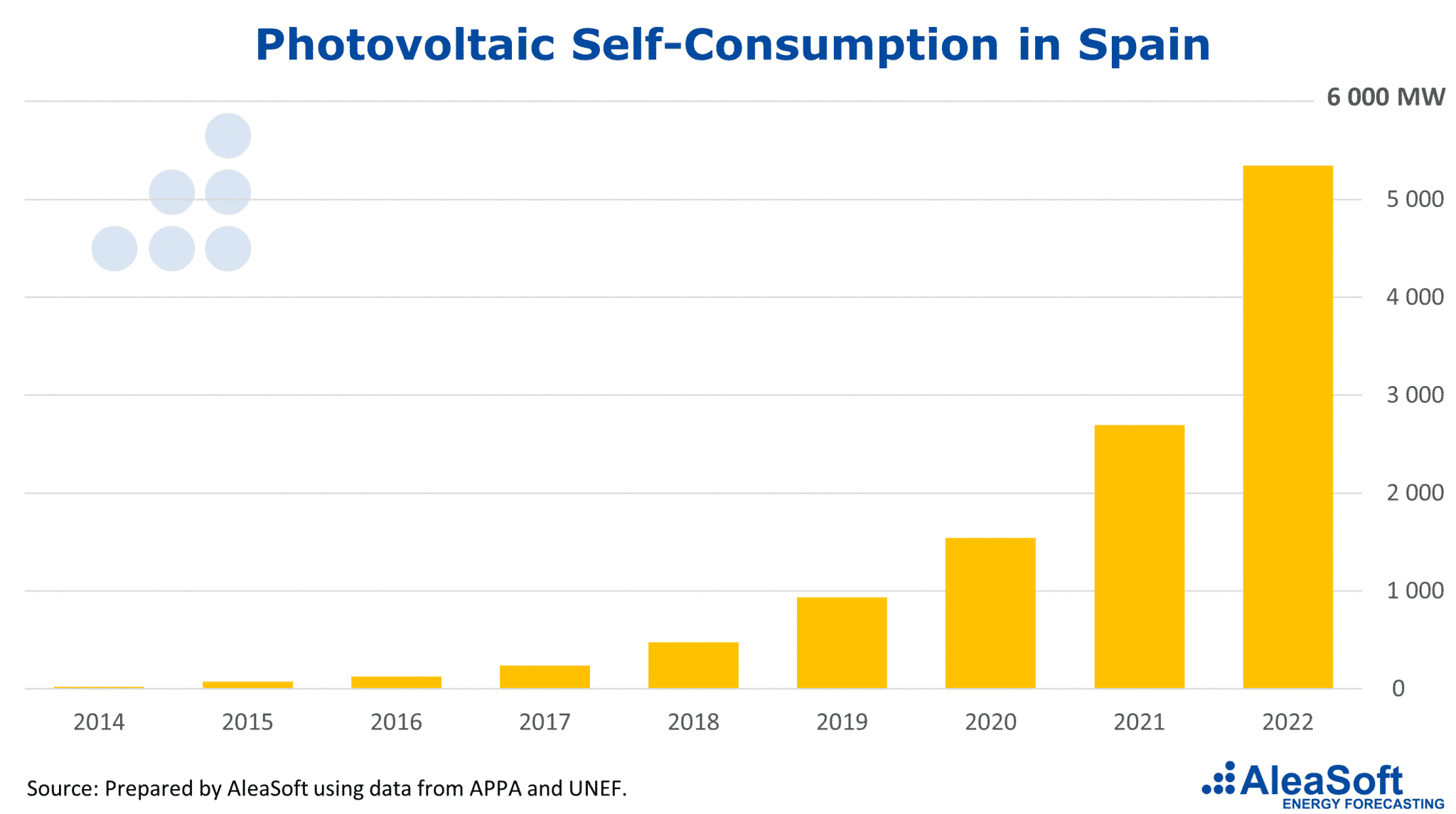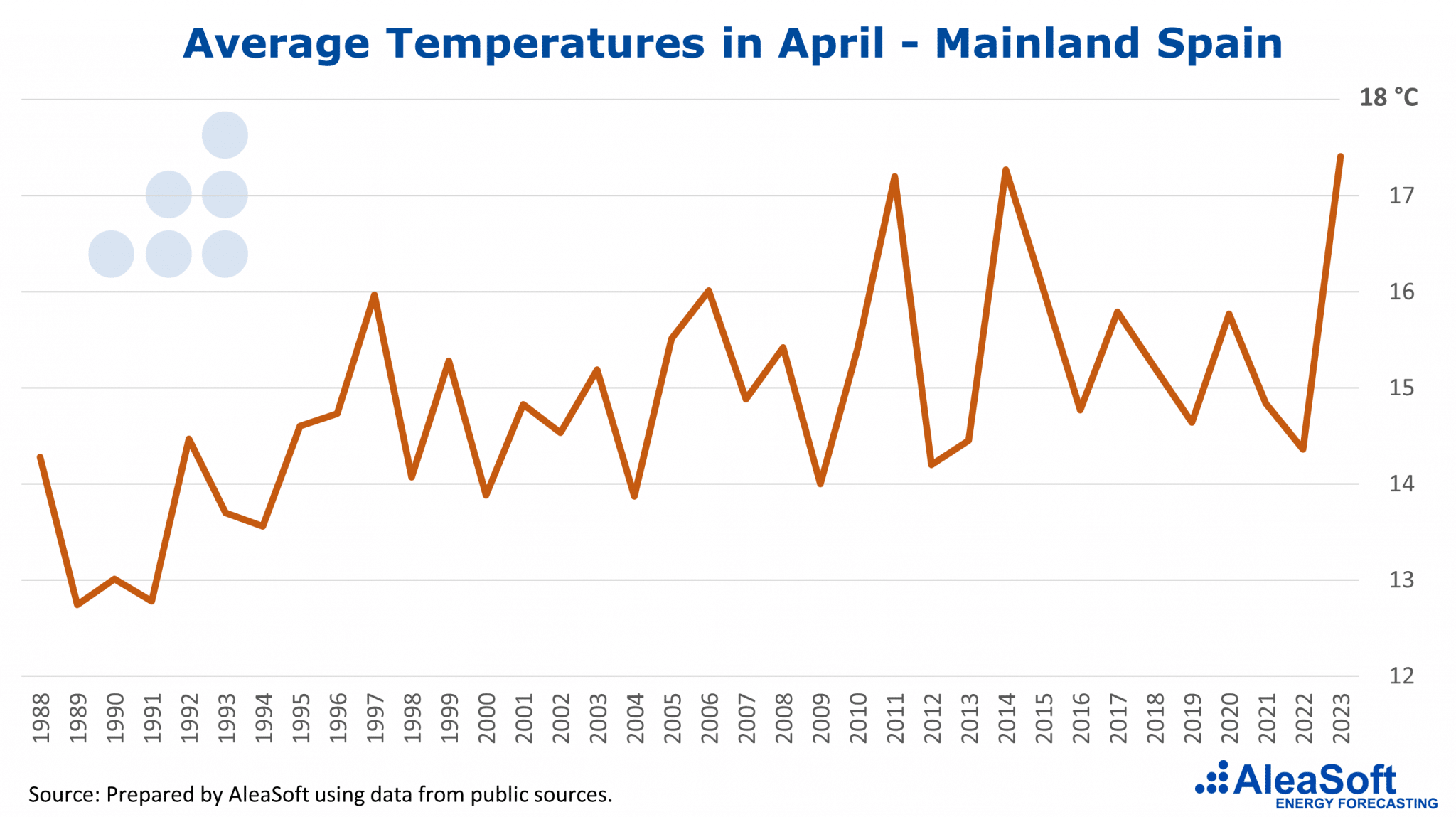The electricity demand in Mainland Spain was at levels from more than two decades ago, if the period of lockdown during the COVID crisis is not taken into account. This article analyses the main causes that led to this extraordinary drop in demand, including the destruction of industrial demand due to the energy price crisis, the increase in self-consumption and the high temperatures registered in April.
The electricity demand in Mainland Spain in April 2023 set at 16 549 GWh, according to data from Red Eléctrica de España (REE). This demand represents a decrease of 14.6% compared to the month of May and of 10.1% compared to the month of April, 2022. These values set the demand in April 2023 as the lowest in the last 36 months, only a 2.2% higher than the demand of April 2020, in the worst time of the COVID crisis, with the toughest restrictions.
If the drop in demand during COVID crisis is not taken into account, you have to go back to 2002, more than two decades ago, to find a demand as low as that of April 2023. This article analyses some of the main causes of this fall in electricity demand in April 2023.
Drop in industry demand
According to the Red Eléctrica Index (IRE, for its acronym in Spanish), which estimates the evolution of electricity consumption of all companies with high electricity consumption, industry demand in 2022 fell by 11.2%, the largest drop in the historical series. According to the IRE, demand in the industrial sector in the first quarter of 2023 fell by 6.9% compared to the first quarter of 2022.
This drop in demand from industry is seen as one of the main causes of the very low demand in Mainland Spain in April. The extraordinarily high energy prices in 2022 made Spanish industry very uncompetitive, and many companies had to reduce production, close temporarily or simply close permanently.
As energy prices gradually return to pre-crisis levels over the next few years, some of that industrial demand is expected to return, but some of the demand will have been permanently destroyed.
Increase in self-consumption
Self-consumption installations in Spain reached 5.3 GW in 2022, according to estimates by UNEF and APPA, with a spectacular growth of 2.6 GW last year, representing an increase of 98%. The production of self-consumption is demand that is no longer consumed from the electricity system, so it is clear that the increase in self-consumption is beginning to have an impact on demand and will become more pronounced over time, as self-consumption installations continue their clearly upward trend.
Warm temperatures in April
The average temperature in April for the Spanish peninsular territory was 17.4 °C. This was the highest average temperature registered for an April month and 2.6 °C above the April average for the last thirty-five years.
Higher than usual temperatures in April represent lower electricity demand due to a reduced need for heating and, at this time of year, temperatures are not yet high enough to cause an increase in demand for cooling with air conditioners. Undoubtedly, the weather conditions have also clearly contributed to the low demand in April 2023.
A month of April with Easter and more Sundays
Easter Week 2023 took place entirely in the month of April. This is relatively common but does not happen every year, approximately three out of every five years. Easter is one of the periods of lowest electricity demand in Spain because it is a public holiday in spring when demand is already relatively low.
Besides, five Sundays were counted in April 2023, the day of the week with lowest demand. Is also not that exceptional, but it does not occur every year, only two out of five years, approximately.
Both factors, Easter and the five Sundays, have contributed to April 2023 having a lower labour rate than usual for an April month. Such a low labour rate for April occurs approximately one in five years. Therefore, working hours were another factor in the low demand for electricity in April 2023.
Energy efficiency and saving
Energy efficiency is something that has been improving a lot in the last decades. Since the 2008 financial crisis, electricity demand has been decoupled from GDP, i.e. Spain uses less energy to produce the same amount. Improving energy efficiency is also one of the key aspects of the energy transition and, although it is not a punctual element of this April, it is another factor that has contributed to the low demand.
In addition, high energy prices in recent months have provided a strong incentive to save energy in both industry and households. Another factor that has contributed to the fall in electricity demand.
AleaSoft Energy Forecasting’s analysis of the status and prospects for financing renewable energy projects in Europe.
The last webinar of the series of monthly webinars of AleaSoft Energy Forecasting and AleaGreen, the edition number 33, in the Spanish version, had the participation of Luis Atienza Serna, who was General Secretary of Energy, Minister of the Government of Spain and, later, president of Red Eléctrica de España (REE), who gave an interesting insight into the future of the energy sector.
The next edition of the series of monthly webinars will take place the next June 8, 2023, and will have the participation, for sixth time, of speakers from Engie who will give their expert visions on the financing of renewable energy projects and PPA. The reform of the European Union’s electricity market and the urgency of creating capacity markets in Spain to encourage the development of energy storage will also be analysed.
